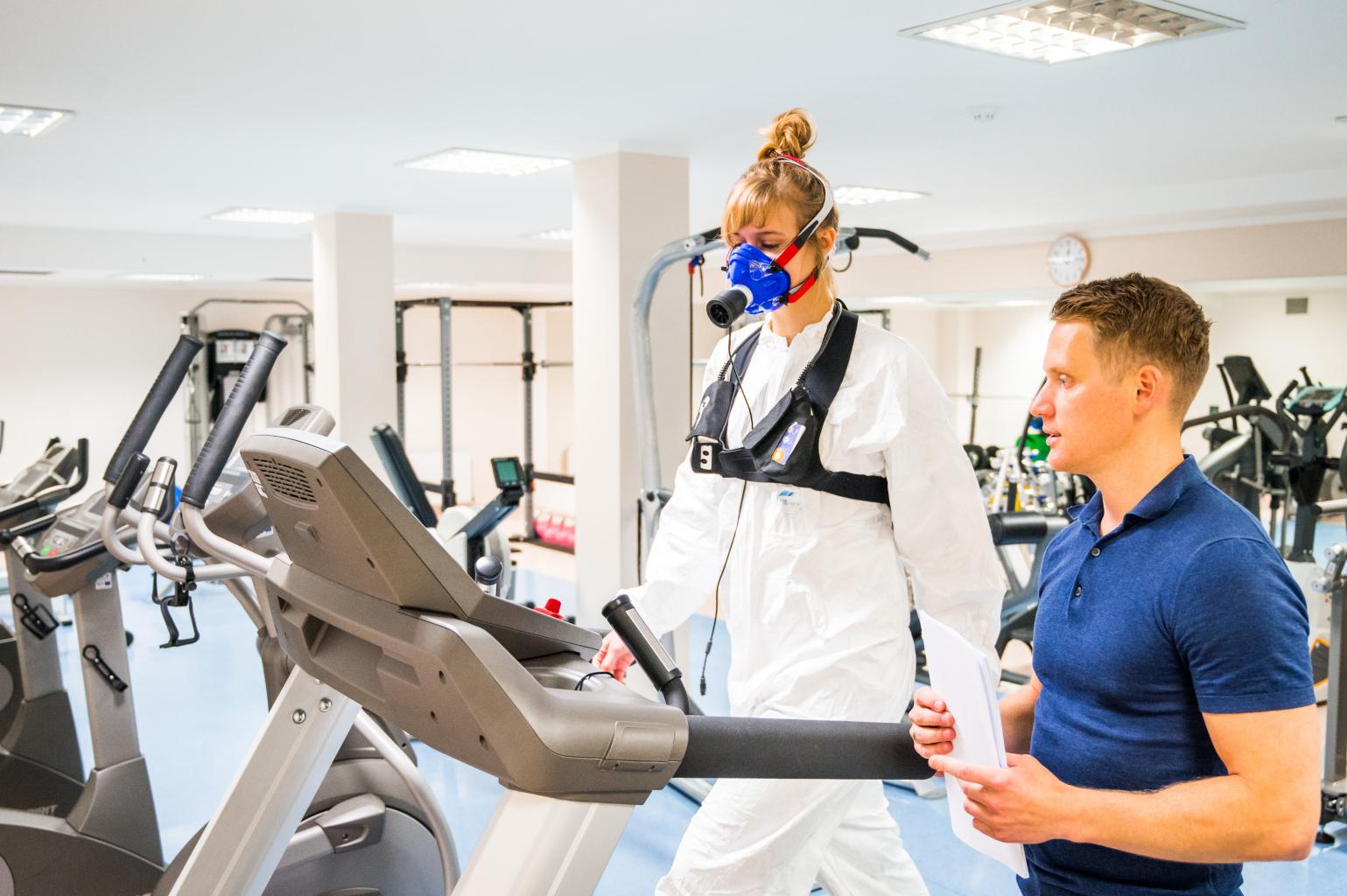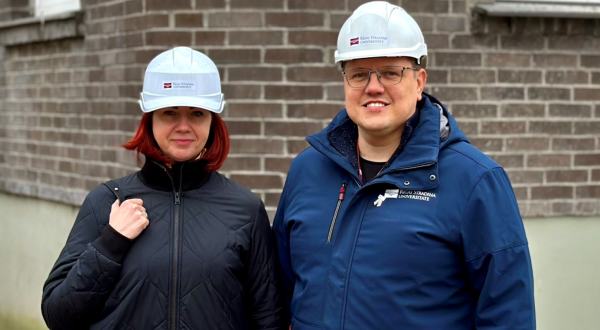How Can a Physiotherapist Work With COVID-19 Patients?
A team of researchers at Rīga Stradiņš University (RSU) has started to conduct research on the development of a safe and ergonomic protective suit under the direction of Professor Aivars Vētra from the Faculty of Rehabilitation. The suit needs to look good and is intended to be worn by physiotherapists, occupational therapists and other functional specialists. This study is being conducted within the framework of the National Research Programme project ‘Integration of reliable technologies for protection against Covid-19 in healthcare and high risk areas’. We asked Professor Vētra about the need for a new kind of protective suit and how it is being developed.

RSU Professor Aivars Vētra
What is the aim of the project?
We have to develop criteria for a protective suit that could be used by functional specialists, physiotherapists, occupational therapists and other medical practitioners. The suit would protect against contracting COVID-19. That is, of course, the priority, but the suit should also enable specialists to move freely and visually has to match patients’ perception of what a serious physiotherapist should look like. It is important for physiotherapists to be able to move safely and freely and leave an appropriate impression.
When would a suit like this be necessary? Is it not possible to postpone physiotherapy, or wait for the patient to receive a negative COVID-19 test result?
The suit is necessary for those cases when rehabilitation cannot be postponed. If a COVID-19 patient has a stroke, for example, they would need treatment immediately. We would not be able to wait until the patient has been cured of the virus first.
The brain’s ability to recover can be impacted and the patient might become disabled. Physical rehabilitation should, therefore, be started immediately.
How are rehabilitation specialists working at the moment seeing as this suit has not yet been developed?
Rehabilitation specialists are using existing protective suits, but these have not been designed specifically for their jobs, but rather for general purposes. They only come in one size, for example, which makes it difficult to perform certain movements. They can also be restricting so specialists get tired faster. In addition, studies have shown that if someone has to apply twice as much force, they only have energy to work for a period that is four times shorter.
After having collected and analysed the first set of data from the study, it has become clear that it is more difficult for specialists to perform their duties and they get tired faster.
Some patients fear, or have a negative perception of medical practitioners dressed in protective suits as they can look like astronauts or aliens. It can therefore be difficult to establish a positive relationship between a patient and a medical practitioner, which in turn affects the outcome of the treatment. There are standards regarding medical practitioners’ appearance, just like firefighters or police officers. Mixing these standards can have a negative impact on the patient and thus on treatment outcomes.

What kind of information helps you understand what the new suit should be like?
There are several things we look at. First, our longstanding experience. Second, our cooperation partners, for example Assoc. Prof. Ivars Vanadziņš, Director of the RSU Institute for Occupational Safety and Environmental Health, Assoc. Prof. Inga Dāboliņa from RTU and other colleagues.
We are also conducting a survey that has been prepared by Laura Kalniņa, a Physiotherapy master’s student. The survey is intended for medical practitioners from various fields to gather recommendations and opinions that will be taken into account when designing the protective suit. Each specialist’s work has its own specificities and uses different movements. Apart from medical practitioners, the survey is open to other professionals who need a suit to protect them from contracting COVID-19.
We have identified various types of masks that are being used in other countries. However, the research related to those is more within the competence of our cooperation partners from the Institute for Occupational Safety and Environmental Health and our colleagues from RTU.
The task is to create an experimental model?
You could say that our task is to create criteria based on which our colleagues from RTU, who work with design and production, will develop a prototype or a sample. Later, large-scale production of the protective suit could begin.

Currently our working group, which also includes RSU doctoral student Rūdolfs Cešeiko and rehabilitation resident Agnese Simsone, meets at least once a week to perform various tests.
In the study’s initial period we tested how well a person was able perform certain activities in a gym dressed in casual or gym clothes. The second and third tests are done with various types of protective equipment. The data is then compared. Hopefully, after some time we will be able to test the experimental protective suit models that have been designed based on our criteria.
It can be said that by developing a prototype for a protective suit, Latvia will become independent from the supply chain and the potential risks to deliveries connected to the virus?
Yes! This is one of our goals. Hopefully we will not have to wait for protective suits to be imported from China, if there are no international flights.
We do not want to be dependent on other countries’ decisions, for example, whether or not to allow a train to pass through. We hope that we will be able to make a fabric using resources from our forests, and the suit might be sewn here in Latvia.
How has COVID-19 affected medical rehabilitation?
It has been a challenge for health care as a whole. During the time when the provision of medical services was limited, or when medical services were not available at all, patients could not make appointments with physiotherapists or occupational therapists.
There are currently no restrictions, but COVID-19 has not gone away, so we have to learn to live with it. We have to be careful, respect the rules and restrictions, and follow our common sense as it’s not possible to write instructions for each individual situation.
Related news
 RSU is growing and developing: major reconstruction underway in the main buildingDevelopment, For RSU Employees, For Students
RSU is growing and developing: major reconstruction underway in the main buildingDevelopment, For RSU Employees, For Students


